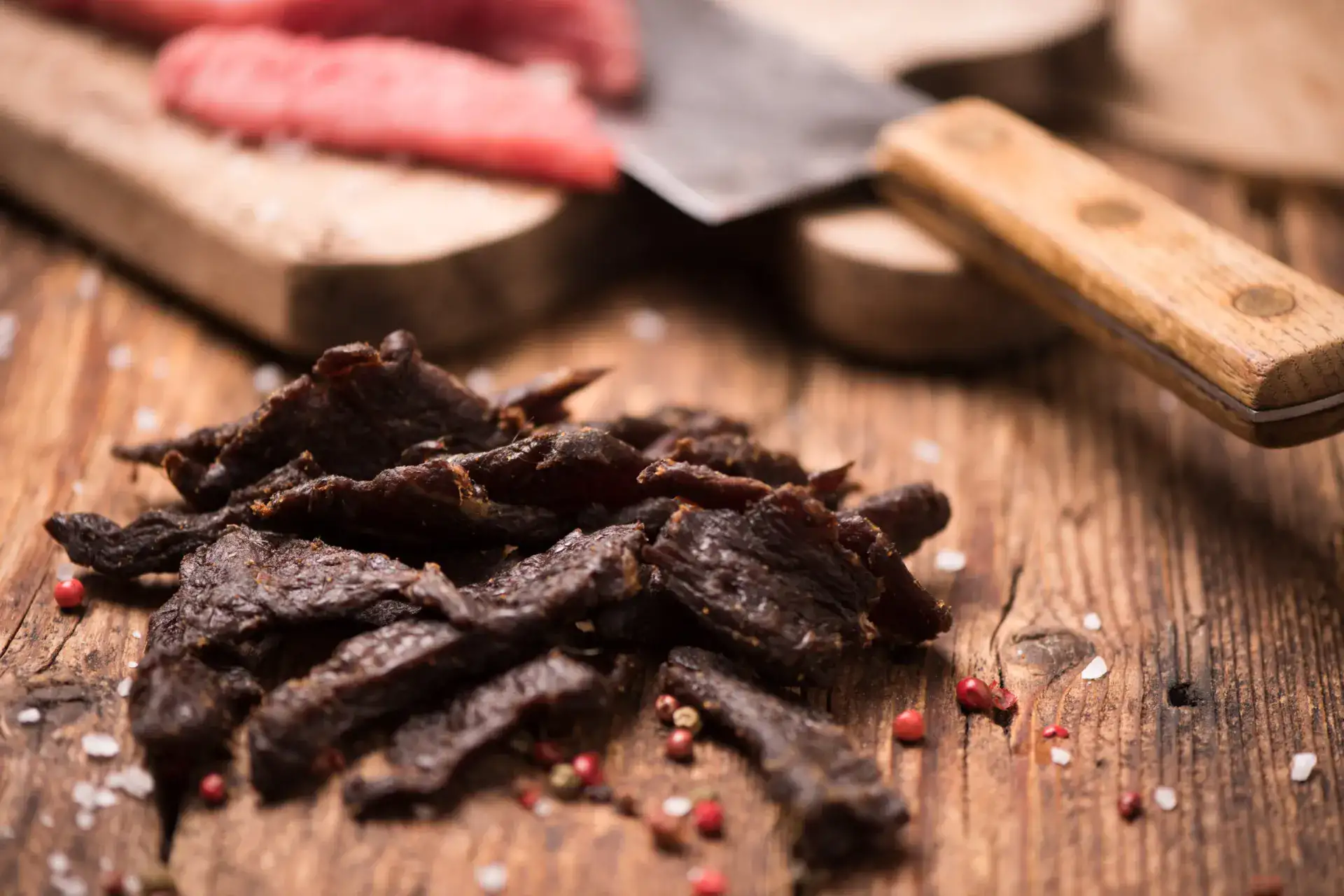We’re guessing if someone says “beef jerky,” you have an immediate reaction. Maybe you wonder, is beef jerky good for you? Or why is beef jerky so expensive? Or perhaps the mere mention of jerky puts a smile on your face. It might remind you of your favorite outdoor adventures or leisurely weekend road trips.
As you might expect, jerky puts a smile on our faces, too. We care deeply about making a quality product that’s both healthy and affordable for our families and yours. So, come along with us for answers to the most common jerky questions and some fan-favorite beef jerky recipes.

Is beef jerky healthy?
Yes, beef jerky is healthy! If you know what to look for and what to avoid. To determine whether the protein-packed snack in your bag is a healthy treat or if you should limit how much you eat, look at the ingredients and beef jerky nutrition facts.
Generally speaking, beef jerky is high in lean protein and low in fat and carbs, including sugar. It has good amounts of minerals and vitamins like zinc, B12, iron, and folate, among many others. These nutrients benefit your immune system, energy levels, wound healing, gut health, red blood cell production, and much more. When purchased from a trustworthy brand like Mountain America, beef jerky is also preservative-free. It’s made without unnecessary fillers, binders, or additives (like nitrates and MSG).
If you’re balking at the amount of salt in jerky, remember that Mountain America Jerky has much lower sodium levels than many other popular brands. Diets with excessive sodium levels have been linked to heart problems and other health issues.
However, sodium is an essential nutrient. Your body requires it to maintain proper fluid levels, muscle and nerve function, and blood pressure. The Food and Drug Administration recommends you stay under 2,300 milligrams (mg) of sodium per day. A 1-ounce serving of Mountain America beef jerky contains around one-fifth of the recommended daily sodium allowance. It also has 14 grams of protein, so it’s well under the salt guideline and great for muscle growth.
Mountain America jerky is also a healthy snack for kids. Our snack-sized portions are easy to slip into a lunchbox or backpack or keep in the pantry to encourage better food choices. Our original beef jerky recipe uses only beef from small herd, locally sourced cows, soy sauce powder, brown sugar, salt, garlic, onion, and spices. You can feel good about offering your kids a protein-rich snack made without junk they simply don’t need.
Can dogs eat beef jerky?
We consider our dogs to be official members of our families, and we love to treat them with jerky! But there’s a lot to be aware of before you make the mistake of peeling off a piece for the being behind those sweet puppy eyes.
Just like the considerations you made for the jerky you buy for yourself, it’s important to evaluate the quality, flavor, and sodium content of what you give your dog. Jerky full of spicy pepper or toxic-to-dogs ingredients like onion and garlic will certainly upset your best bud’s stomach.
Salt is the bigger issue, however, as too much isn’t safe for your dog. It can cause vomiting, diarrhea, muscle spasms, fluid retention, high heart rate, and even death. According to Dr. Jerry Klein, DVM, Chief Veterinary Officer for the American Kennel Club, salt poisoning (aka salt toxicosis) can happen in minutes or hours from just a single high dose of salt.
So, rather than sharing your favorite people-perfect beef jerky flavors, your pup will be much better off with jerky for dogs. Ours is made from pure, naturally dehydrated single-source protein with absolutely no additives.
Why is beef jerky so expensive?
When it comes to jerky, you get what you pay for. Lean cuts are the best cuts for beef jerky, and they cost more than fattier cuts. The best beef jerky comes from makers like Mountain America that use top and bottom rounds for tender jerky with great flavor. Cheaper jerky is made with cuts higher in fat. These cuts have more marbling, which negatively impacts both taste and texture.
Also, since beef is about 60 percent water, much of the initial weight (and therefore per-pound cost) is lost during dehydration or smoking. Taking it from a raw material to a finished product isn’t quick, either. Even a small batch of jerky takes up to three days to make.
Another financial factor is whether the jerky is smoked or dehydrated. Dehydrated jerky is less labor-intensive (aka cheaper) to make, but the result is drier and tougher jerky. Smoked jerky is the best jerky. It delivers a semi-moist and chewy product, even if it comes at a slightly higher price. If you want to forgo labor costs altogether, you can always make your own jerky!
Beef Jerky Recipes
If you’re wondering how to make jerky at home, we have a fan-favorite venison jerky recipe that features multiple methods and marinades. Before working with raw meat, though, take a few minutes to brush up on jerky-making food safety guidelines first.
If you do go the DIY route on some smoked meat treats, we recommend you take a look at our tips on how to store jerky for peak flavor and freshness. The tips in that guide are great for storing our preservative-free jerky as well.
Still, we prefer to leave the actual making of jerky to the experts and use our favorite big bags of bulk jerky to spice up regular recipes, pack for river trips, or take skiing.
To grab a pack for your next adventure or to have it on hand as a healthy snack, visit our beef jerky store.
Leave a Reply